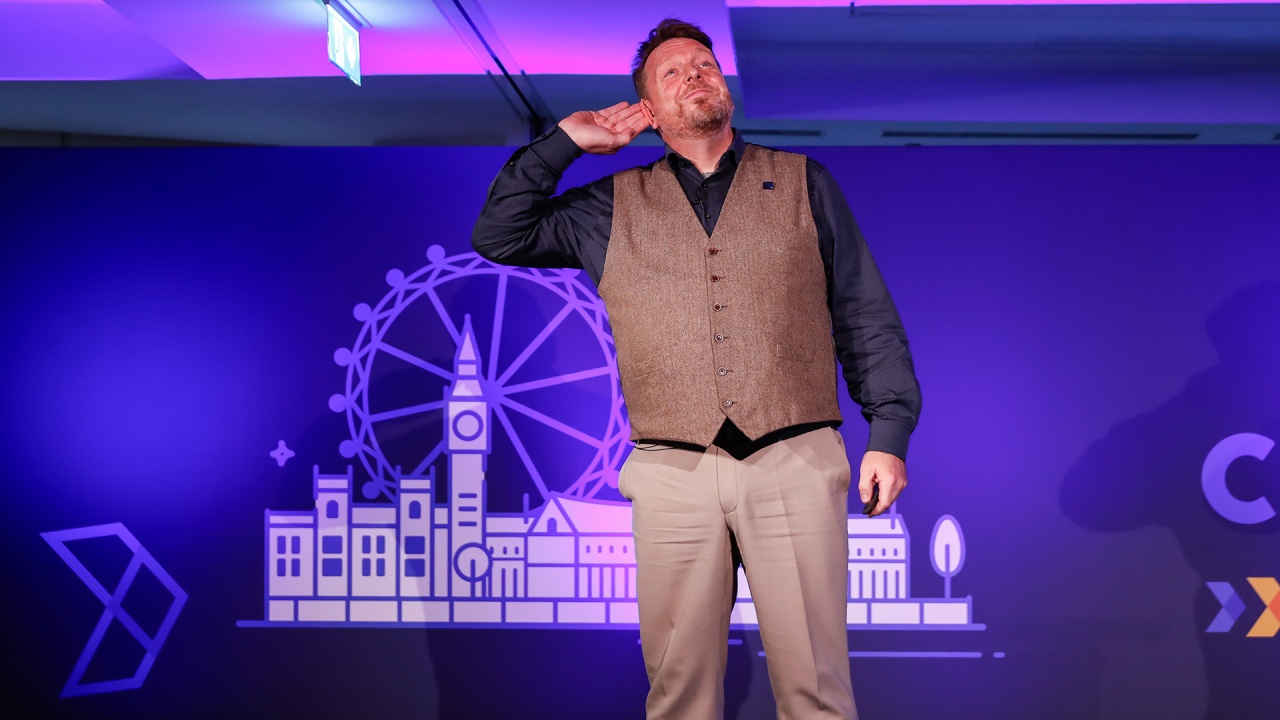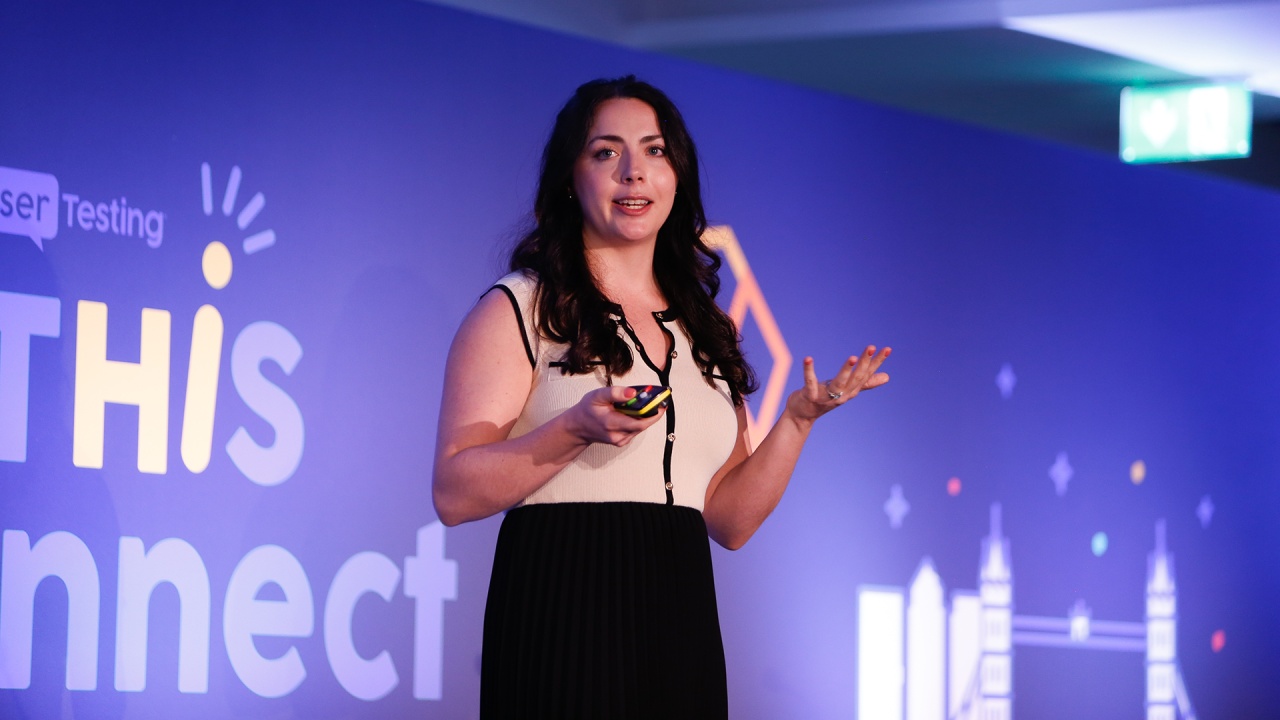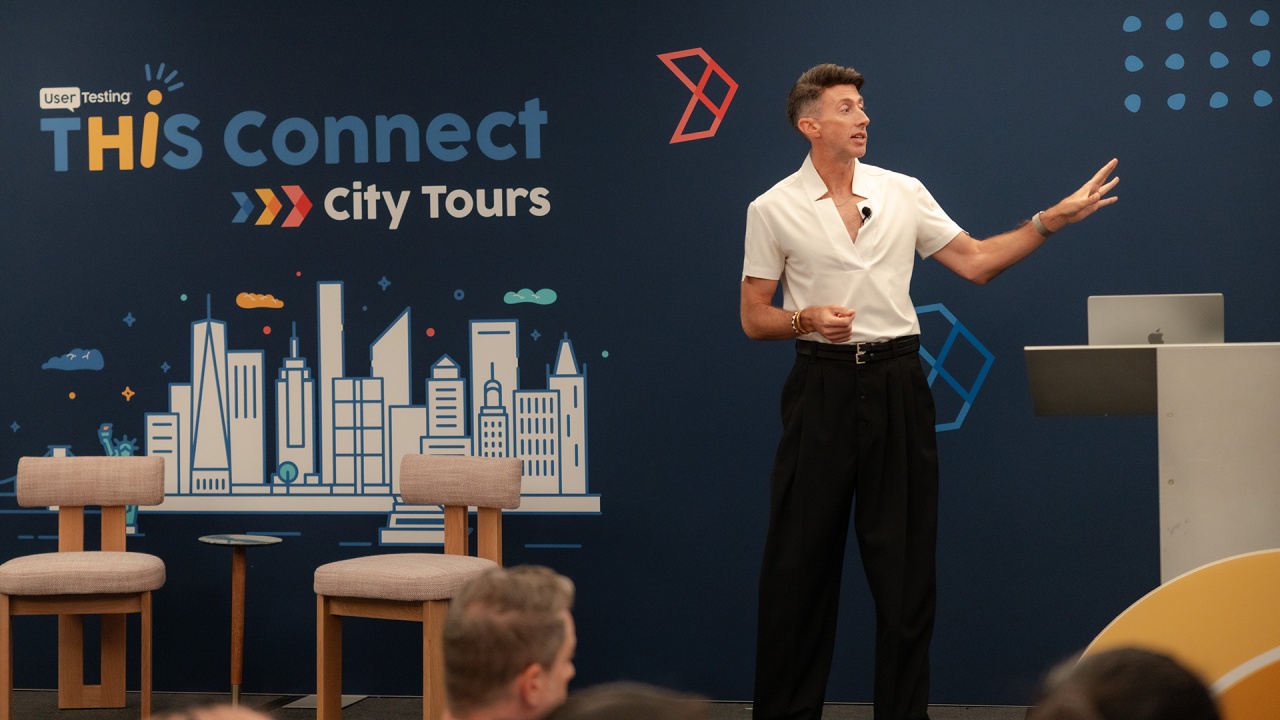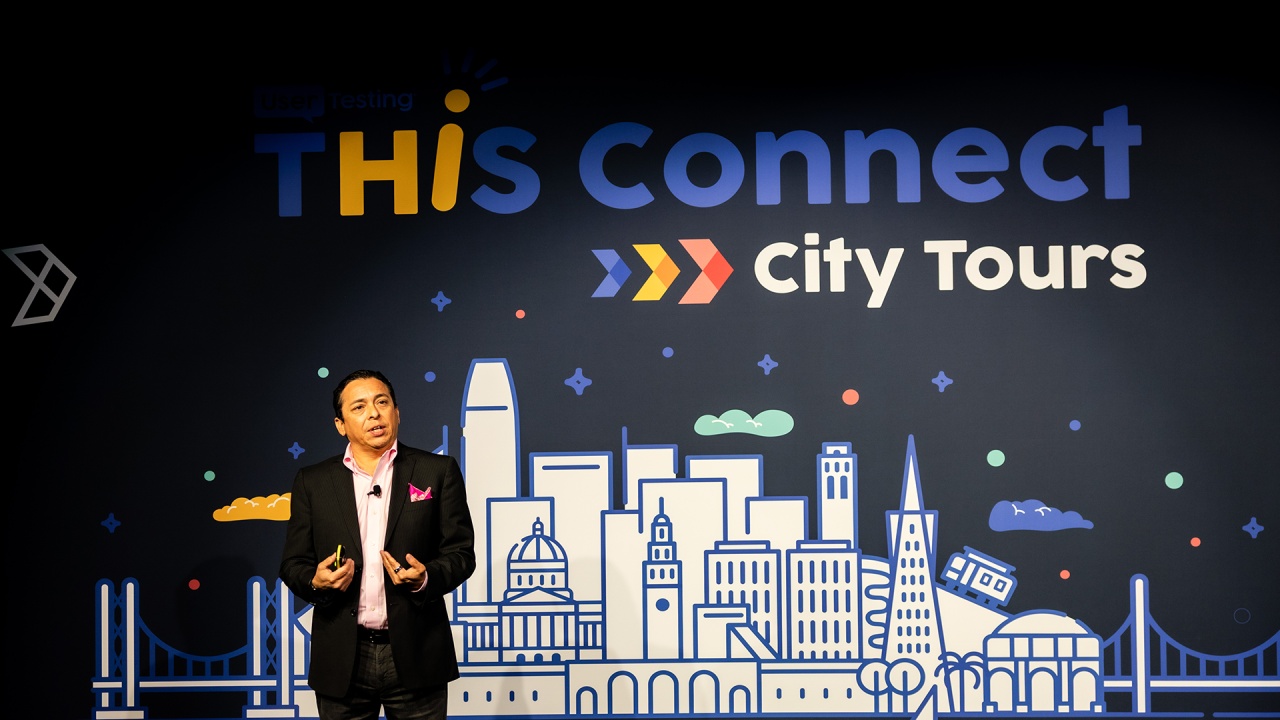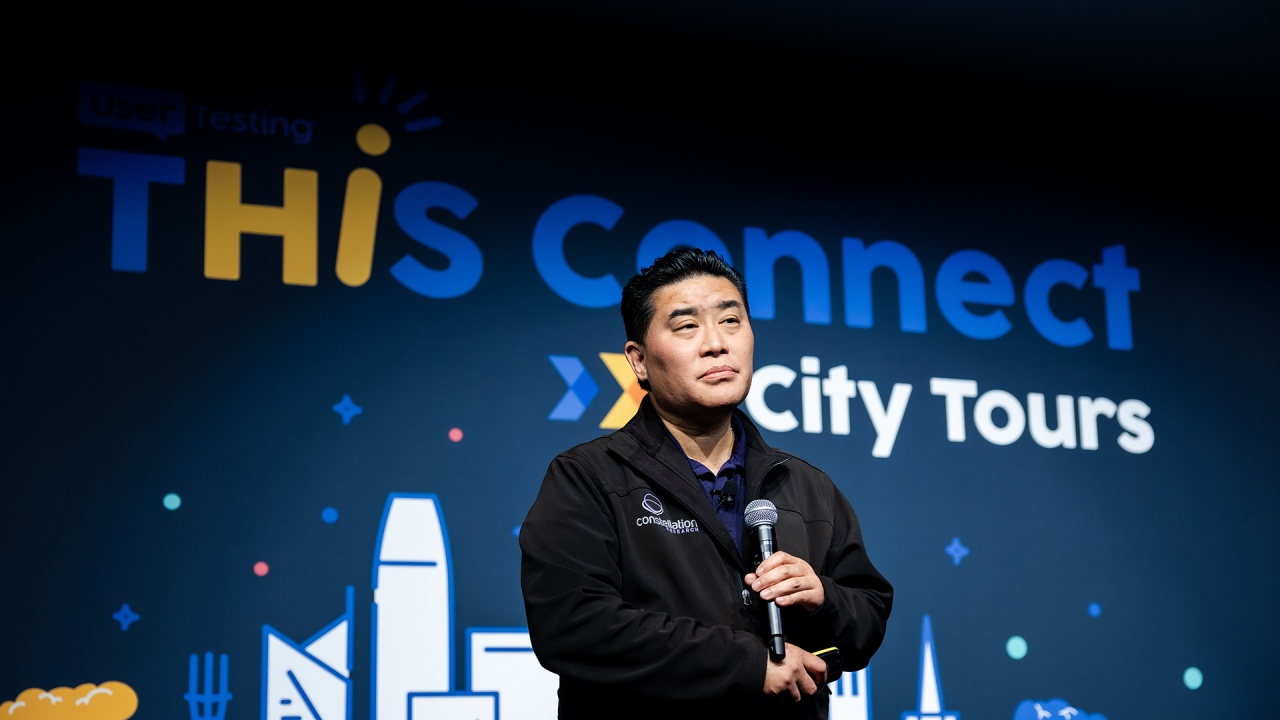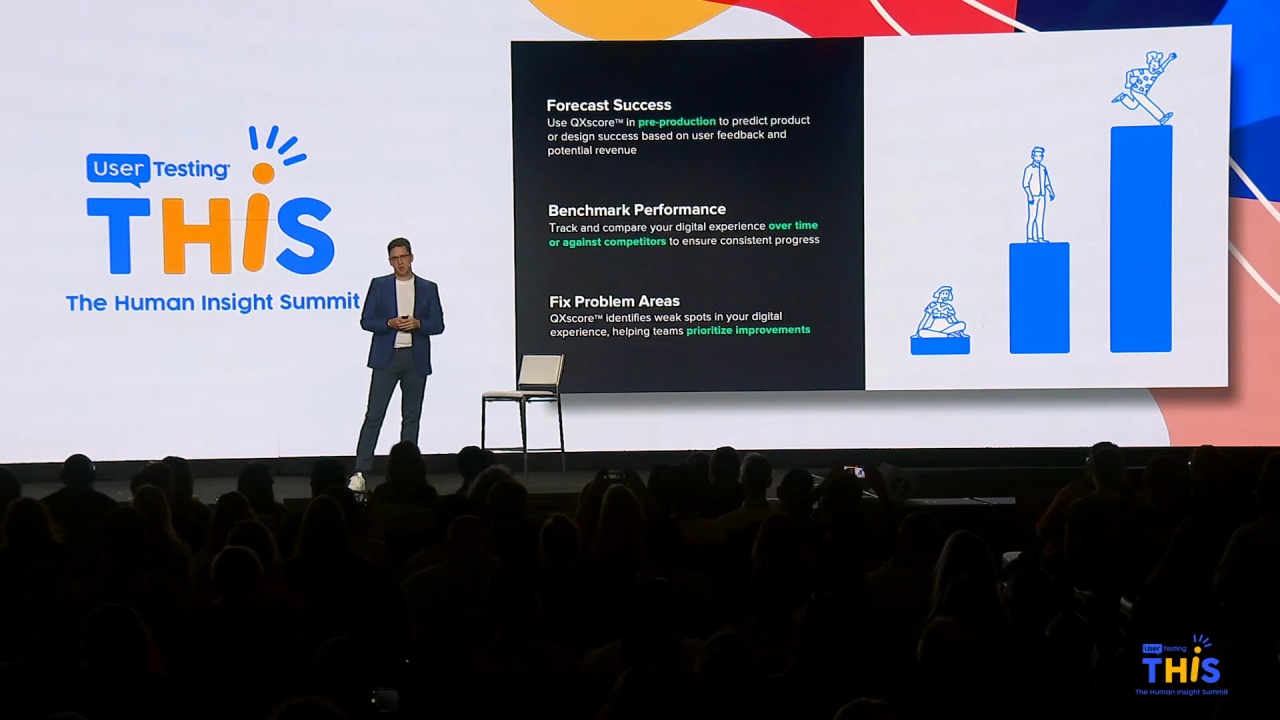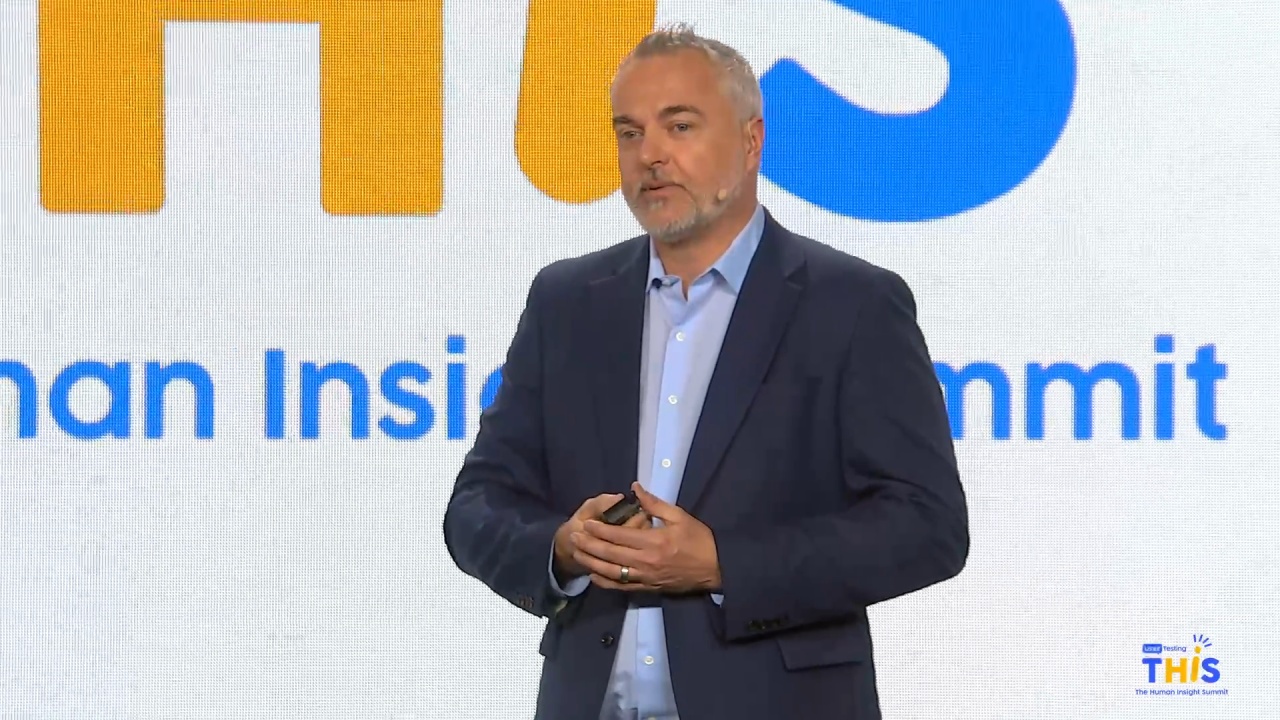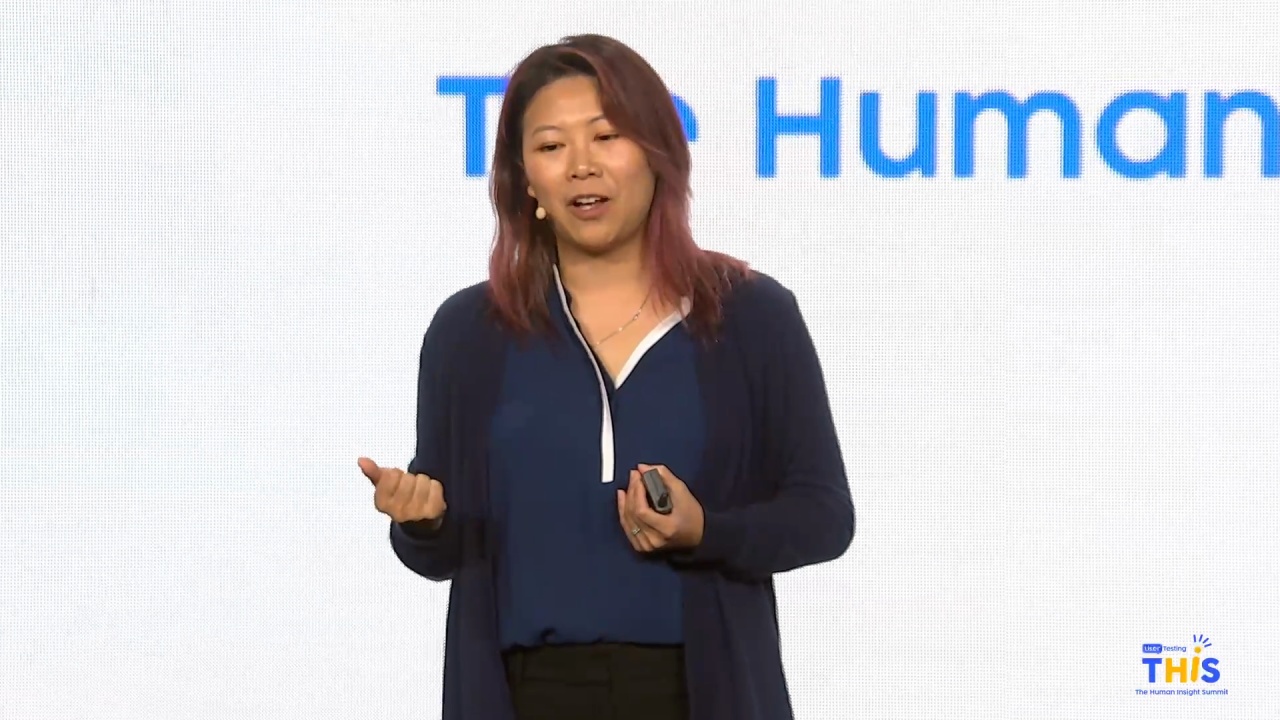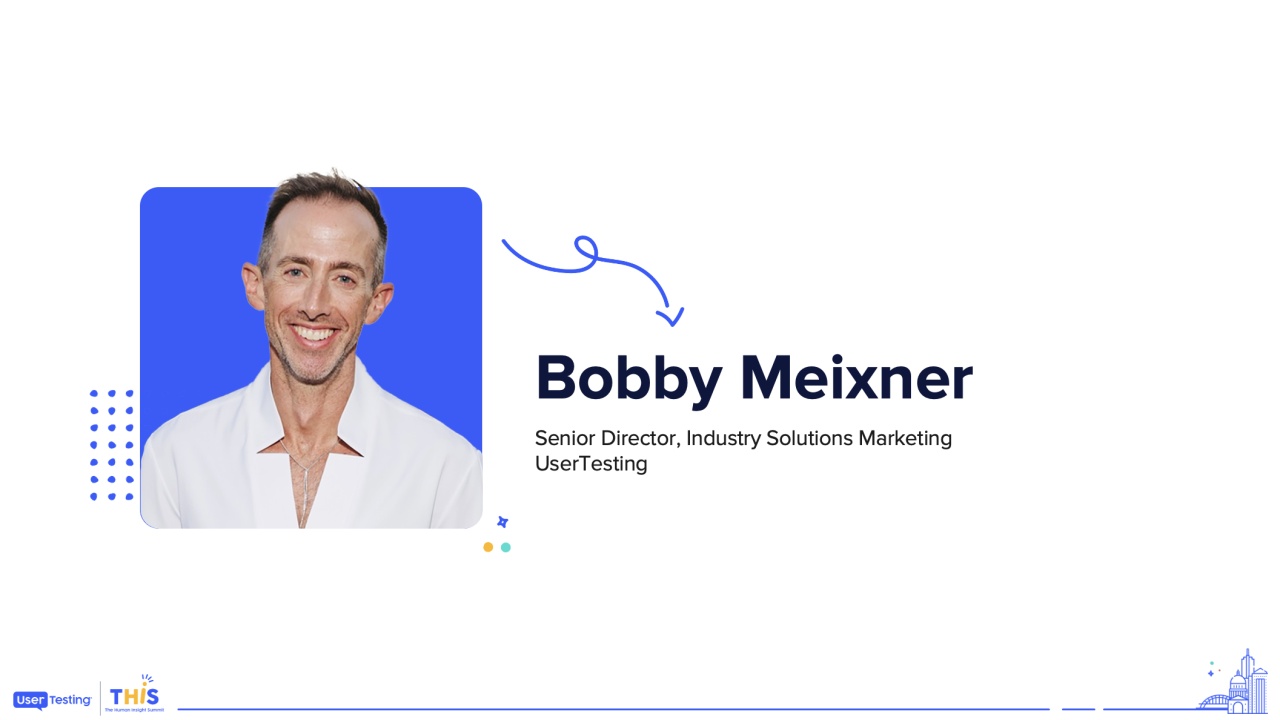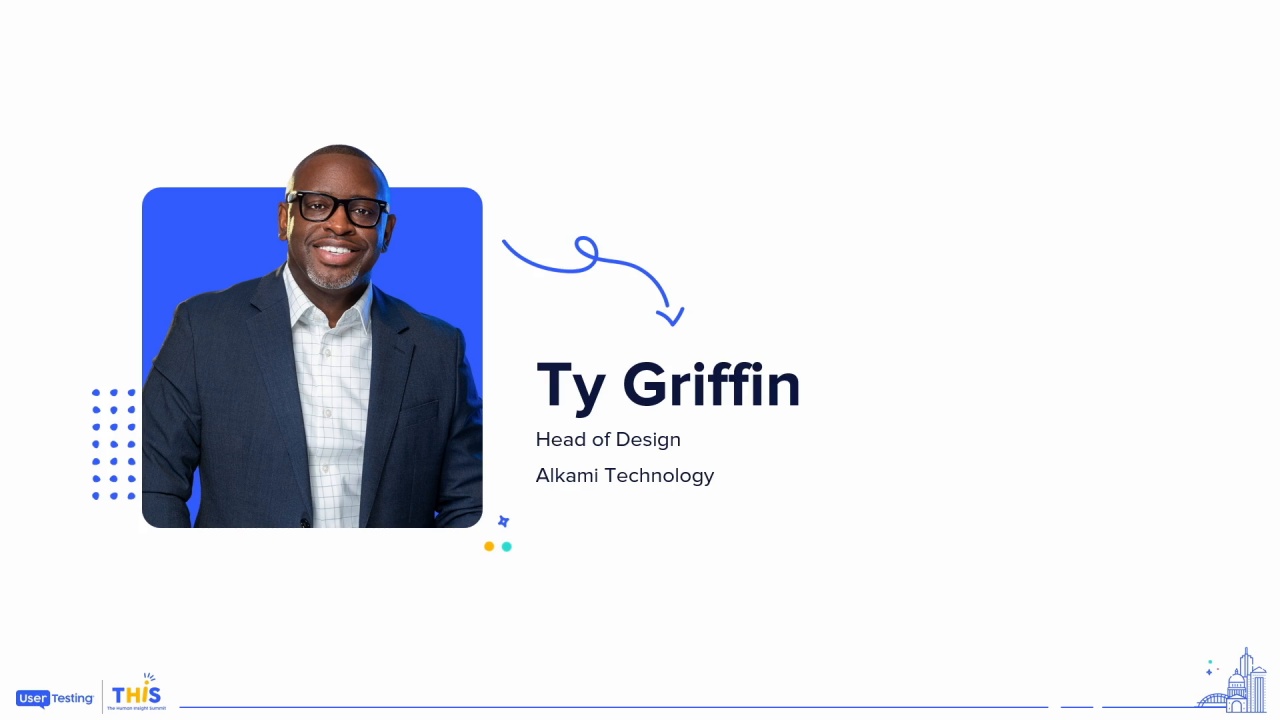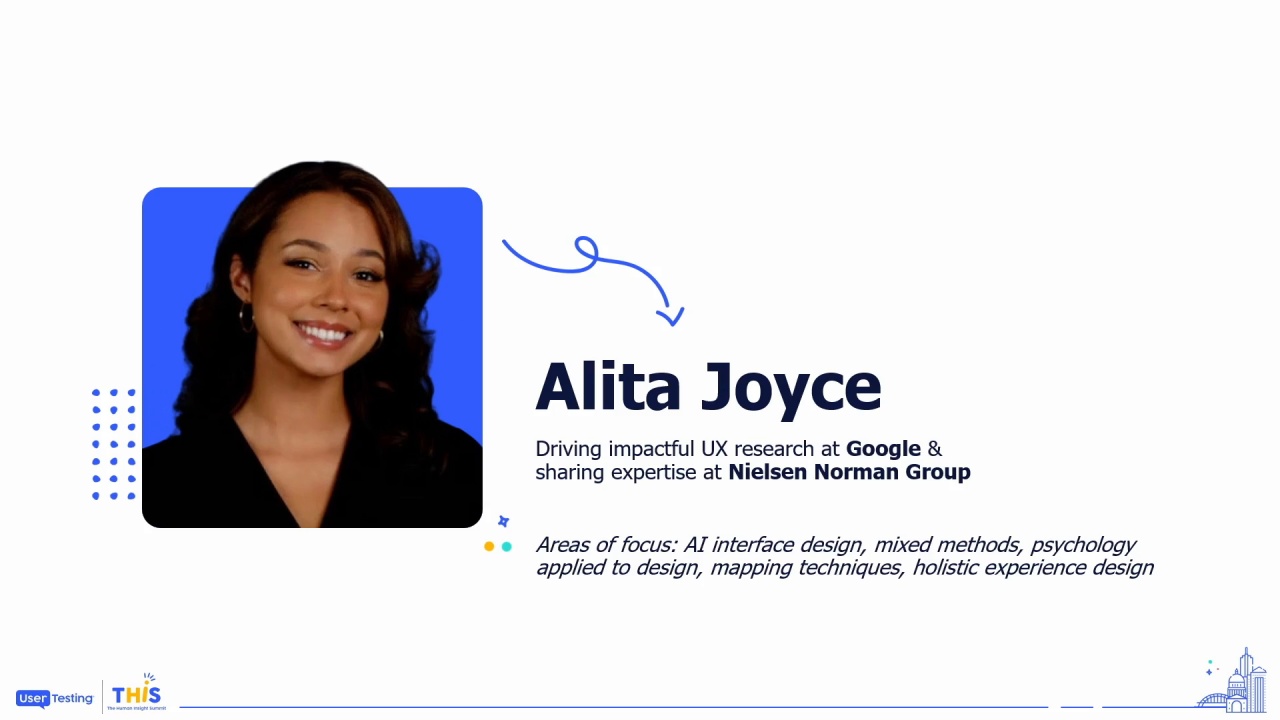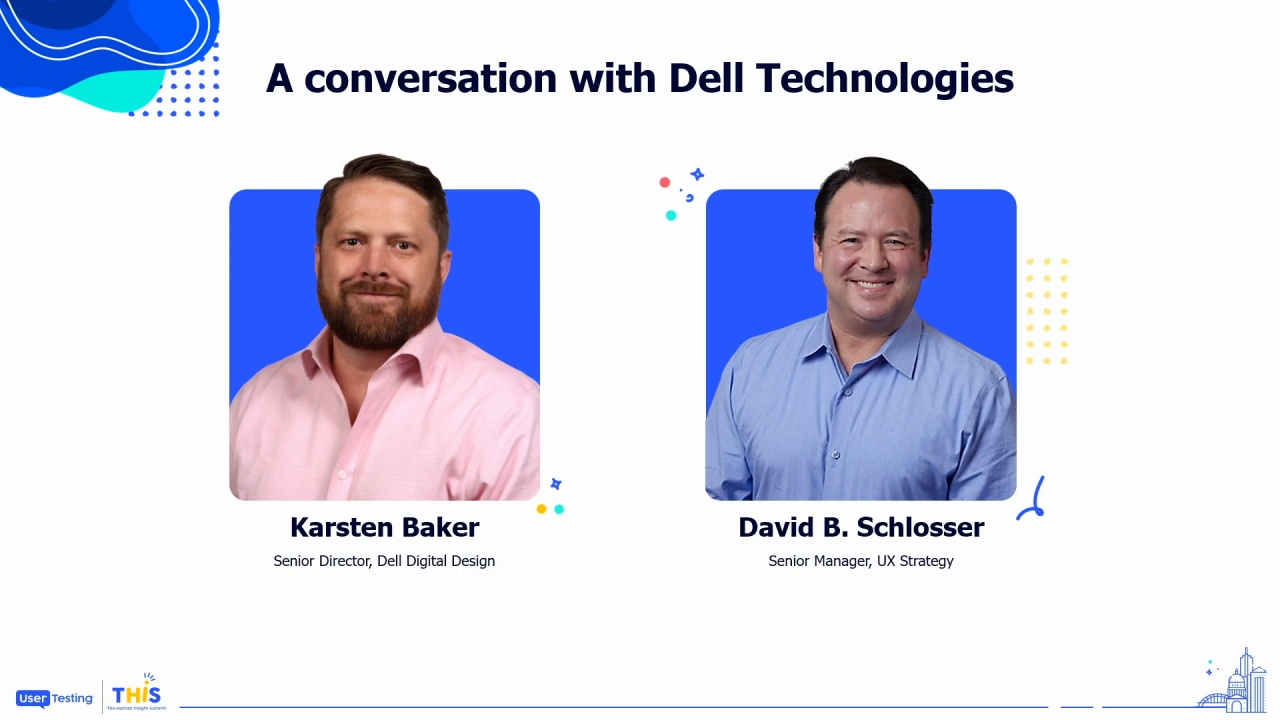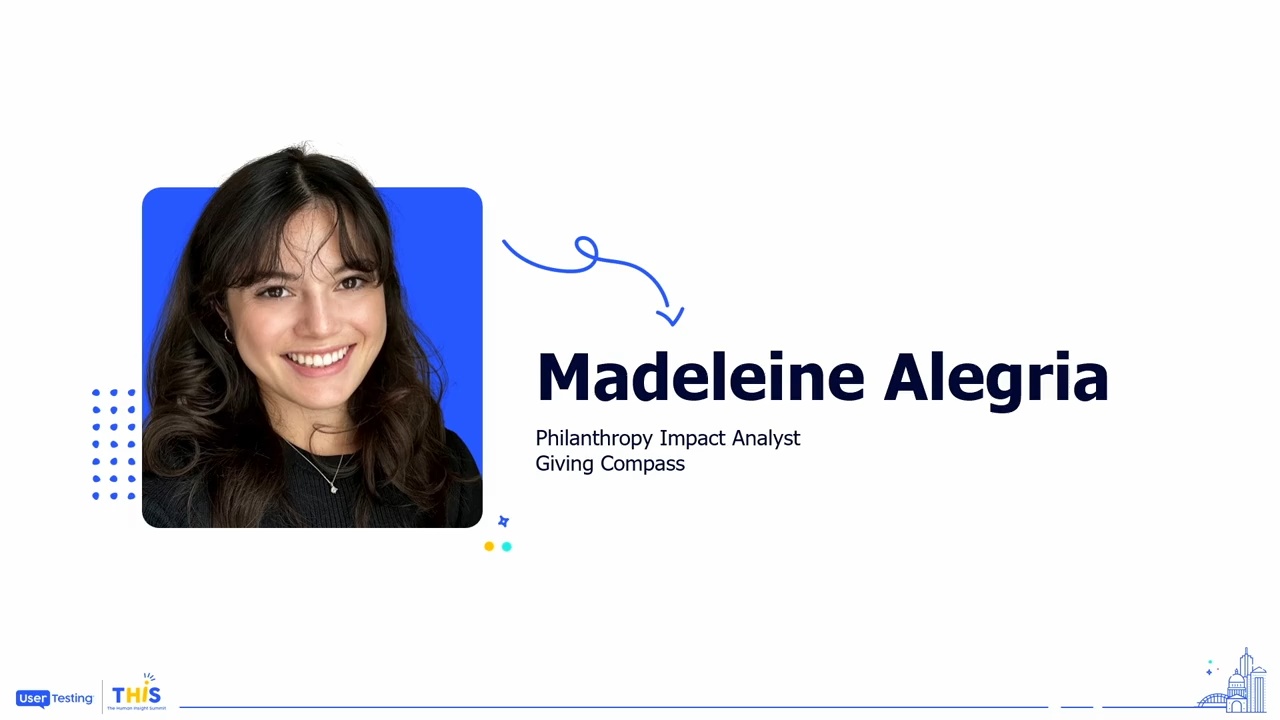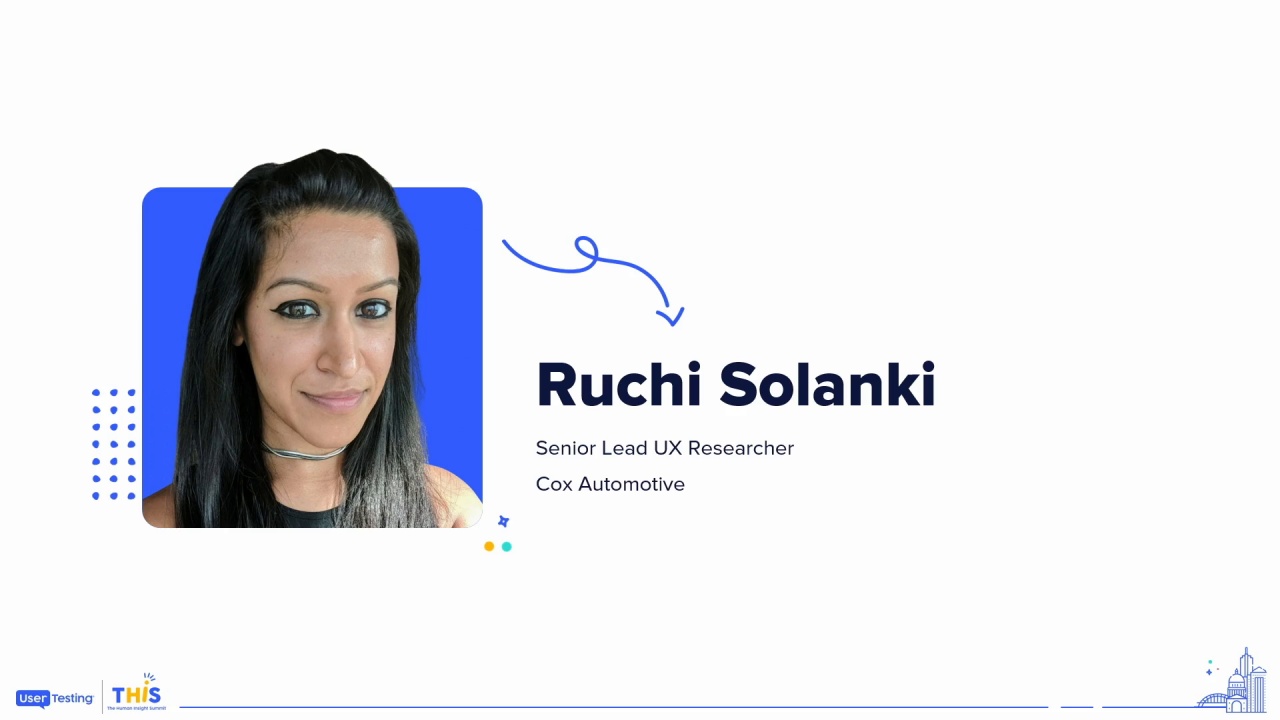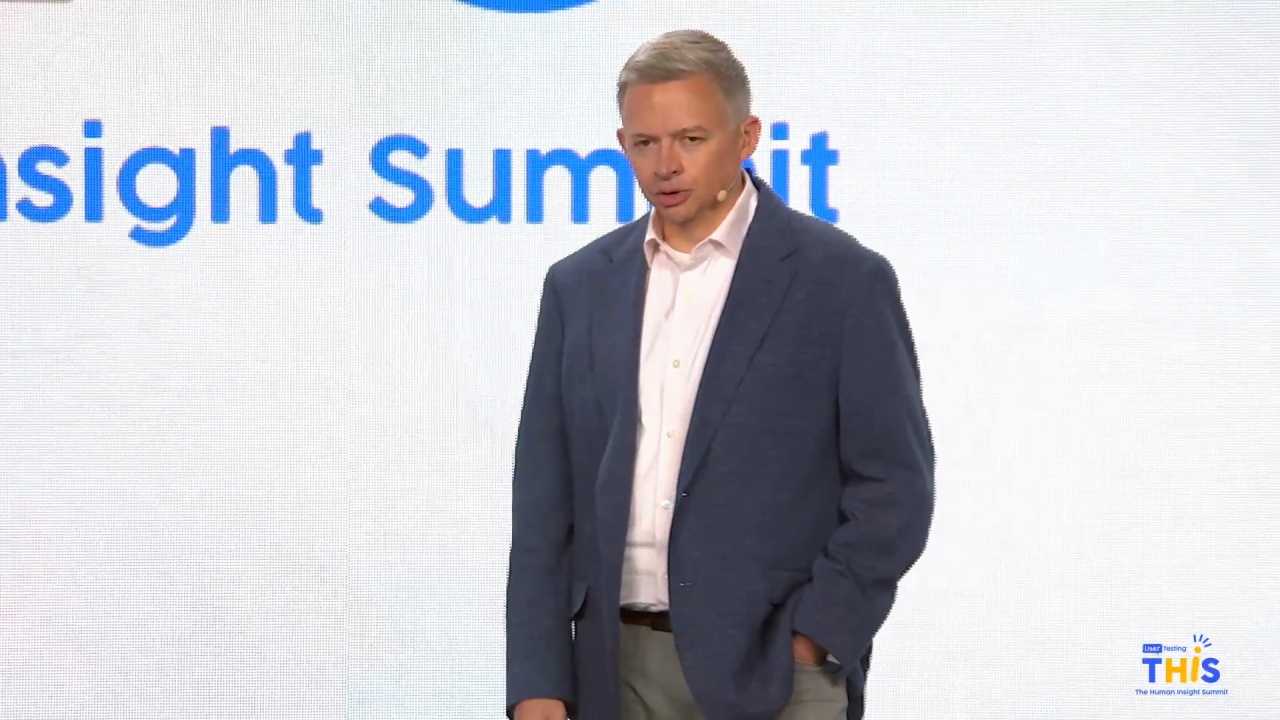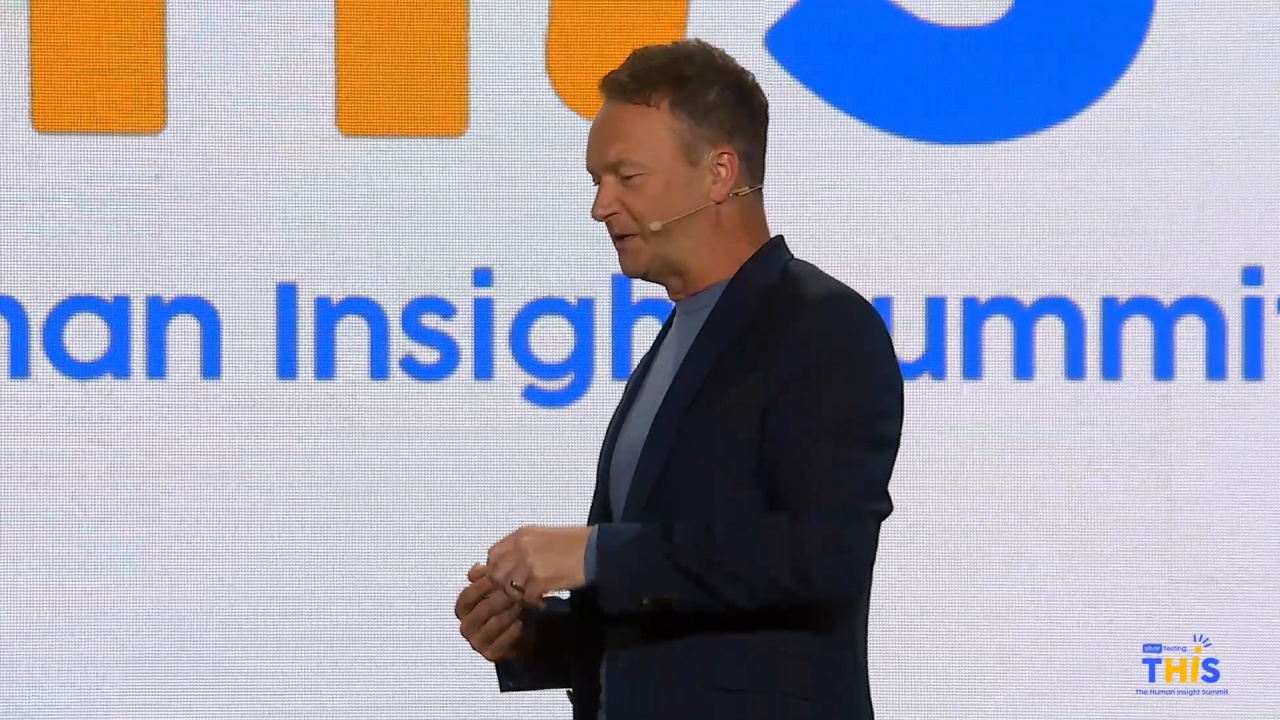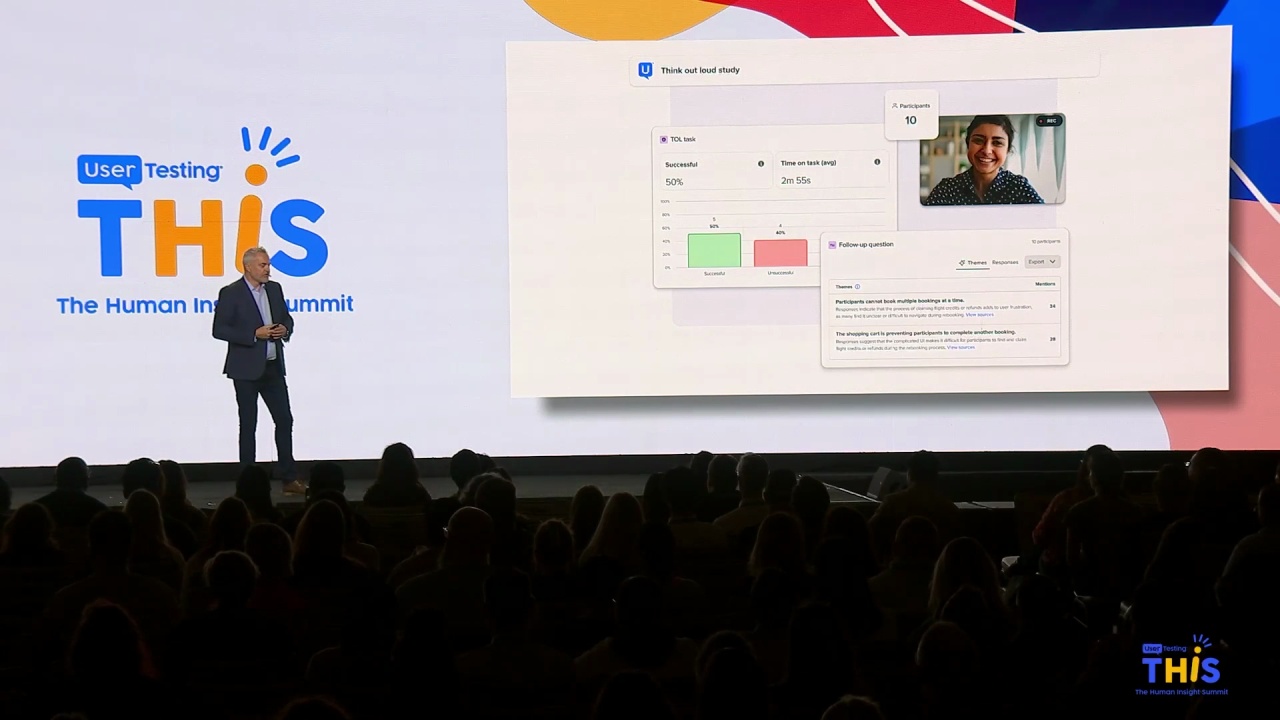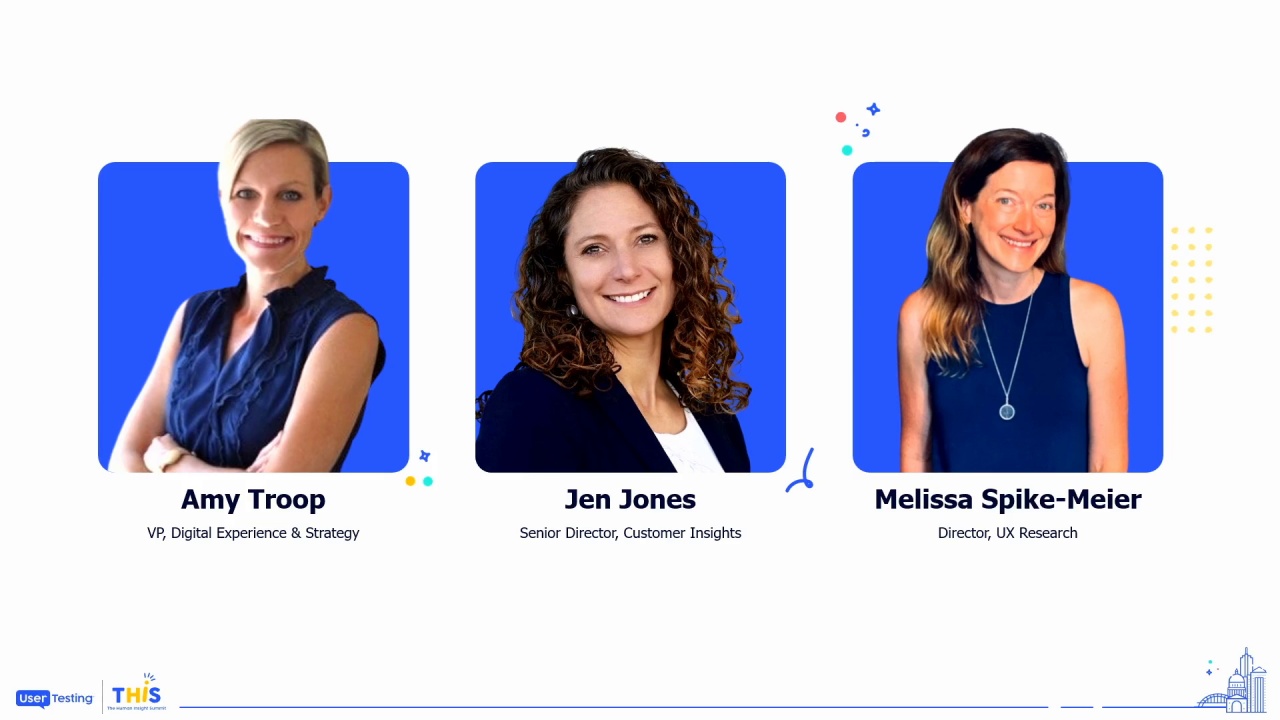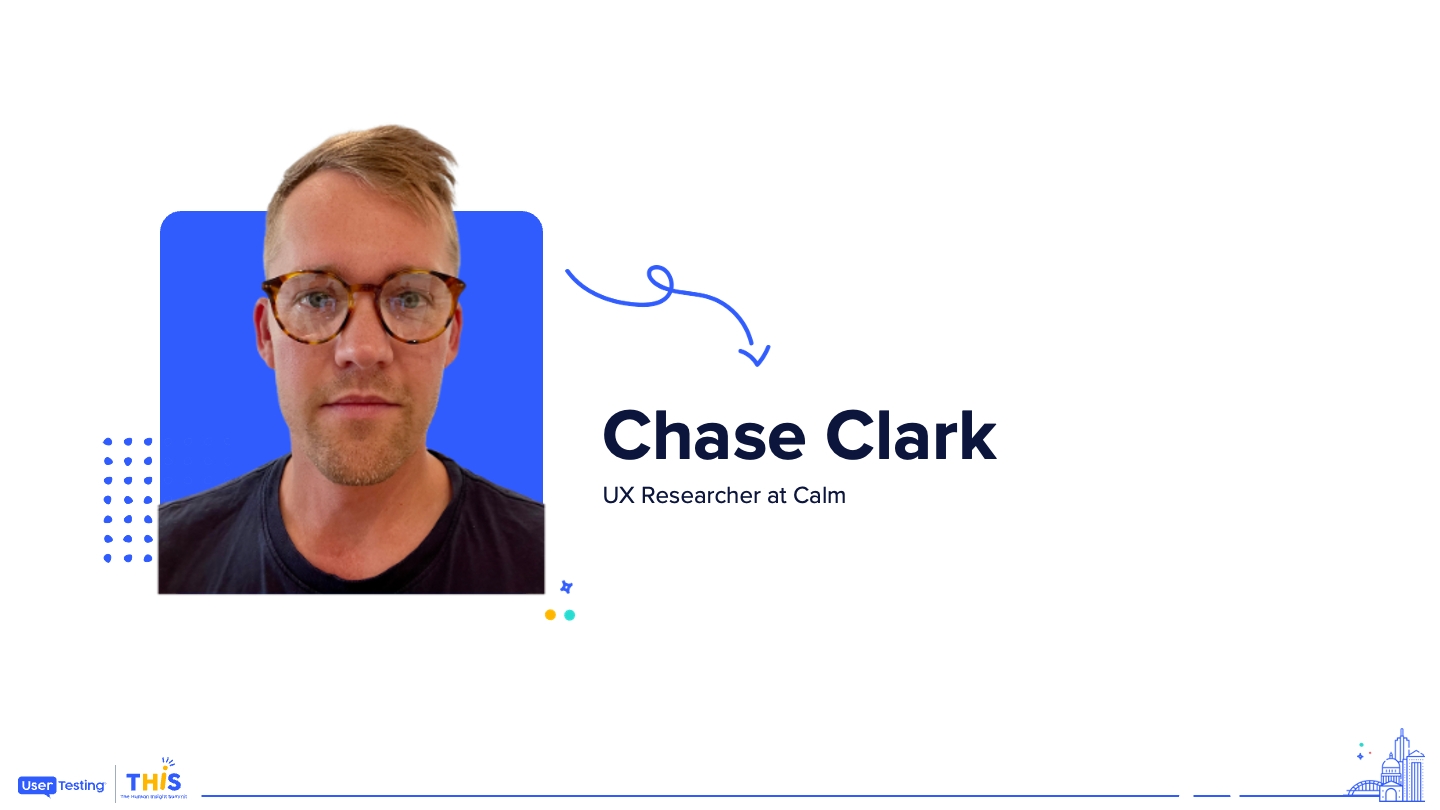
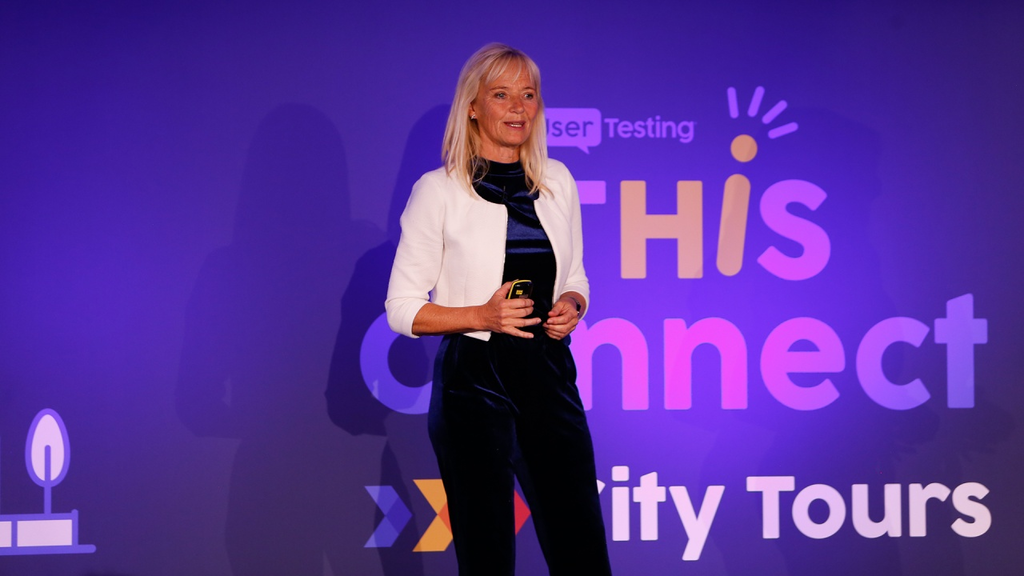
Nancy Rademaker: Finding the Sweet Spot between High Tech and High Touch Customer Centricity
Nancy Rademaker
International Keynote Speaker & Co-founder, Speakers Club
Join AI expert Nancy Rademaker as she demystifies Generative AI and explores its ethical and business impacts. Discover how blending technological power with human creativity unlocks smarter decisions, deeper customer connections, and future-ready organizations—all while keeping people at the heart of the AI revolution.
How to survive in a world where technology plays such a prominent role? I gladly take you on that quest. And for me, the the answer here is finding the balance between tech on the one hand and the human on the other. So finding the sweet spot between high-tech and high touch, for me, is the only survival strategy in what I call the next normal. And the next normal is this era where we've moved from digital being a novelty to digital becoming the new norm.
Well, on the right hand side, digital has lost its moment.
There...
How to survive in a world where technology plays such a prominent role? I gladly take you on that quest. And for me, the the answer here is finding the balance between tech on the one hand and the human on the other. So finding the sweet spot between high-tech and high touch, for me, is the only survival strategy in what I call the next normal. And the next normal is this era where we've moved from digital being a novelty to digital becoming the new norm.
Well, on the right hand side, digital has lost its moment.
There it is. Now, for some people from the old normal, it's quite hard dealing with all that technology that surrounds them.
And now with the pandemic, we've seen an enormous acceleration of digital. And, again, all normal people were suffering like my dad. He got his very first video call from my daughter, and he did not have a clue what was going on. And some of us found it hard weaving in technology into our daily existence.
Now the point with technology is that this evolves in an exponential way. We see this in the evolution of computing power, the evolution of the amount of data, the amount of devices, and the amount of algorithms swarming our world.
And the problem with this exponentiality is that we humans have a linear working brain.
And that means that more often than not, with exponential innovation, we don't see it coming. It starts a bit negative at first, and so leaders think it's going to follow that linear line, but instead, it goes boom. And it's in between the line of exponential and linear that true disruption really occurs.
I just said the beginning of this year, and I'm just so happy I asked I used KPMG because Adam told me you need to get these high organizations in when you're using stats.
At the beginning of this year, KPMG found that seventy six percent of leaders think there is going to be massive disruption in their sector within three years. And this disruption is mainly coming from these three things, from new technologies, from new competition, and from higher expectations amongst customers.
And that's the reason why leaders find themselves in these massive splits because you know that you can't just let go of the old normal. You can't just stop what you're doing. At the same time, you know that you need to start doing things differently. You need to innovate.
And innovation, if you ask me, needs to happen on three levels. You need to innovate in the now, you need to innovate in the next, and you need to innovate in what I call the beyond.
So first of all, it's about improving the now, making these small incremental improvements to your business model time and time again. And then some people tell me, Nancy, that's not true innovation.
Maybe not in a technical sense of the word, but it's definitely important.
Then it's about creating the next, looking for new business models, new market segments, what we used to call diversification in old school marketing. But what I think is the most important is this, it's imagining the beyond. Daring to look ahead five, ten, fifteen years from now and then work your way back to now to figure out what you need to start doing now in order to get there, which is completely reversed from what we're used to doing. Because usually, we look at numbers from the past or at the very best of the present and then extrapolate from there. So there's a mindset shift that needs to take place.
Now technology has turned our world upside down, probably has turned your organization upside down, and will continue to do that in the near future. But what I think is even more important is not how it has changed our companies, but how it has changed us as humans.
And now the clicker has stopped. Yeah. There it is. Oh, guys. You're testing me. Oh, that's why it's called user testing.
Right? So we as humans have changed and I always like to use the model of the five eyes. So these are five characteristics that are either completely new or have become more prominent because of technology.
So first of all, we've become much more informed. There's more than five billion of us on the Internet, even more people having a mobile phone. And so this has really become our umbilical cord to the world. Or as Steve Jobs said when he introduced the iPhone, we hold our life in our hands. And so I must say, I really feel very sorry for this guy.
He just threw away his life, didn't he? So when we used to have some time to ourselves every now and then in the past, these days we are continuously online. We can't be at a greater distance than two feet from our devices.
We have all become smombies, smartphone zombies. And I must say some cities have even accommodated their infrastructure for the smombies creating separate walking links for people with a phone and for people without.
Now the thing to get here is that you are dealing with customers who are literally drowning in the sea of information.
We are in a constant information overload, status.
So instead of offering your customers even more choices, I would say offer them less but more relevant ones to reduce their stress of choice.
Secondly, we've become much more individualistic.
We have literally put ourselves in the center of our very own universe.
And the biggest metaphor for this individualism, of course, is well, not mister Trump, but is the selfie where we create a picture with ourselves in the center and the celebrity or the disaster as a mere background.
I must say some people from the old normal still find it hard creating their own selfies.
We've also become much more impatient. Our span of attention has gone down from fifteen seconds in the nineteen seventies to just seven point six seconds these days, which makes that we are officially beaten by the goldfish that has a span of attention of eight seconds. We have all become the swipe generation, and we don't like waiting. We don't like waiting in airports, for example. This is my hometown airport, Skip Hall, was rebranded by the passengers into Shithole a year and a half ago because of the long waiting lines.
We don't like waiting in supermarkets either and that's the reason why Amazon came up with its Go concept where you enter the grocery store, you get recognized through your phone, you pick everything you need, and then you just walk out. That's their slogan. By the time you're outside, your account has been settled.
We've also become much more intuitive. What do I mean by that? Because most of us like to view ourselves as rational human beings, don't we? But our brain consists of two parts. Yes. We do have our rational brain, but we also have our intuitive or emotional brain. And maybe it will surprise you, maybe not, aids with this brain that we make ninety percent of our decisions.
The rational brain acts as a referee, so to speak, keeping you from doing bad or unhealthy things.
My rational brain keeps me from eating all the chocolate I encounter.
Now the thing here is because this rational brain is so overloaded with information, it tends to lose the referee function. And so what you need to realize as organizations is that you are dealing with customers that act in a completely intuitive way.
And then last but not least, we have become much more influenced.
Globally, on average, we spend about two and a half hours on our social media every single day. Who spends more time?
At least one honest soul in the audience. Thank you so much. So that's the reason why we don't believe what companies tell us in their ads anymore. We trust our peers much more than we do the organizations.
So these five eyes, you need to take into account. And mind you, they are not static. They are dynamic. They keep on changing. And so that's the reason why in the next normal, no matter how much I hate this buzzword, agility really is crucial, constantly having to adapt to changing customer behavior and changing customer needs.
At the same time, your strategy can no longer be rigid. So no more five year plans fixed in stone, but instead, it has to become fluid. And I love this quote from Jack Ma, the former CEO of Alibaba who said, at Alibaba, we don't have strategy. We do continuous AB testing, and we adapt accordingly, preferably within two days.
Now that's what I call fluidity.
So what is it that all of us could learn from these disruptors out there?
It will not surprise you that the biggest lesson we can take from them is to not start with our product or service, but in everything we do, start with the customer.
And I've loved the previous speakers that I think all reinforced this message.
If you start from your product only, it may be very hard to differentiate yourself. And if you're being viewed as a commodity, it's even harder.
And so in this battle for the customer that all of us are experiencing, of course, customer experience comes first, which is a tough term to define. If I were to ask all of you for a definition, I would probably get as many different definitions as there are people in the room. Mine is this one. It's the perception of the customer of every interaction he has with any part of your organization and this related to his expectations.
And there may be as many as two hundred of these interactions or touch points as you call them. And so it's about constantly analyzing them, reviewing them, changing some, letting go of of others, creating new ones. This is what I meant with improving the now.
And when you do this, when you design the customer experience, you need to do so with the customer in mind. And I think I come from IT. I think that sometimes where IT experts fail dramatically. They create interfaces that they themselves really love, but they forget to take the customer's perspective into account.
Now it will not surprise you because we are we are so intuitive that a large percentage of the customer experience involves emotions.
It's about how the customers feels, not just the rational part. So it's not only about how quickly the goods are delivered or the phone gets answered, but how they feel. And just a few years ago, I was doing a keynote speech for Basics, which is a Belgian construction company, big company. They helped build the Burj Khalifa tower in Dubai.
And they told me, well, we don't do about nothing about customer experience. In our business, it's solely on price. Everything is about tender management.
And of course, in this male dominated, sector, you would not expect too much of emotional engagement.
But then we did some research and it turned out that ninety percent of all the deals in the construction business are granted because of personal relationships.
And when the work is done, it's not the speed of, you know, when the work was done or the quality of the work that makes customers happy, but if they feel cared for as a person.
So I would say it does matter. Now, of course, there's a tendency to ask customers to, you know, what they want, and that might be a very bad idea.
Disney encountered this because because they asked visitors to their theme parks what they would like to be served for lunch. And people would say, healthy salads, smoothies, fruit juices, and what would they buy?
What do you think? Burgers. Burgers, hot dogs, and soft drinks. And that's because if you ask the question, it's the rational brain that will answer.
So the only thing that you can do here is actually take a look at their behavior to find out what works and what not.
And not just the behavior that you think is relevant, but all of the customer behavior.
Now that was the first thing that the disruptors do so well, so focus on the customer. The second thing they do very well is use technology. In fact, these companies are tech first companies. They start from tech. They don't digitize old processes. They start from the technology, and they are very quick at embracing and adapting to new technologies.
Now if we look at the past three decades, we've seen a number of milestones, and all of them took away some barriers. They removed different types of barriers for us. Internet made it easier to start a business, web two to, connect, cloud to collaborate, mobile to make purchases, and AI and Gen AI will help us make it easier to create. And just like you've embraced all these previous technologies, I think it's high time to do the same with AI. So let me ask you a question.
Who in this, audience believes that they work for an organization that has an AI strategy in place.
Okay.
Not too many hands. Well, the user testing guys, I can imagine.
This is what the former, CEO of eBay had to say about that. If you don't have an AI strategy now, you're going to die in the world that's coming.
When he said this, that was twenty nineteen. So it was not urgent then. I believe it is very urgent right now.
Other question, who believes they know sufficiently about AI already? And don't worry if you do raise your hand, I will not start asking questions. So who believes they know quite a lot about AI already? This is a question, guys.
Okay.
That's usually why I compare it to teenage sex. You know, everybody talks about it. Nobody really knows how it works, but they think everybody else is doing it so they claim they're doing it as well.
For many people, AI is still like magic. It's this hocus pocus. It's a black box. Nobody knows what happens.
For me, it's not hocus pocus. It's just pocus because that's a wonderful acronym for the five major application areas of AI.
In the beginning, just machine learning, making predictions, recognizing objects, creating content, natural language, understanding and, speech synthesis, and, of course, also robots, self driving cars, self flying drones, and what have you.
And then we take it another step further with generative AI. So twenty twenty three basically, and that's just two years ago, was the year of generative AI. And why is it called generative? Well, because it generates different types of output.
In the beginning, it was entering a text prompt and then for you to get something out of there. Who has never experimented with generative AI? I used to call it, you know, the other way around, but okay.
Good. So we've been using it as our productivity assistant. Who uses Excel in their organization?
Finally, most of the organizations do. So we you probably also experienced the Excel jungle where we have multiple workbooks with multiple worksheets, lots of columns, thousands of row, and they all have one thing in common, and that's that you can't find what you're looking for. And so finally, now we can ask the question in natural language. We can then get an answer, find the relevant cells, and it will create some charts on the go as well. So for productivity, it has been, truly a delight to work with Gen AI.
But for creating applications, it's also very, I will say, very disruptive, and also very fast. The speed is really exponential. With machine learning, it used to take about seven months from the beginning to deploy deployment of the model. With LLM based development that's come down to about a week and a half.
And if we talk about applications, there's good news, and the good news is Taft. You can you can remember this. It's the short for there's an AI for that. That's actually a website. So AI first mindset these days is if I have a problem, is there an AI for that? If not, can I build it myself? And if that's not the case, then you hire an expert.
So twenty twenty three, year of gen AI. Twenty twenty four, a major earthquake happened in technology land. And at first, it went largely unnoticed, but it was really important and that was multimodality. So instead of having to put in a text prompt, we could now have anything as input.
So if you encounter this and you don't actually know whether you can park your car or not, you can just ask a GPT and it will give you the answer.
Many retailers have cameras in their in their stores. You can use the the the images, the videos from these cameras in real time to, for example, compute service time or, the queue time of your customers.
And in health care, it can be used to spot restless or agitated behavior and notify care teams.
And then you can also combine text and images. And if you have this beautiful image, you can then ask a GPT to create it into a drone view. And what it will actually do, which will use you will see here, is kind of look around the corner for you.
And just a few months ago, I was doing a keynote speech in Paris. Before me was a lady, speaking in French.
After me was a guy speaking Italian, and there were Germans and Spanish speaking people in the audience. Imagine the number of interpreters you would need, but they use Interprefy instead, which is an app that allows you to have, in real time translation on your on your app, on your phone with a delay of just one to two seconds in your earbuds and if needed also, into sign language.
And then another beautiful example of multimodality is Pickle AI, where during a Zoom meeting, you can actually you can create your avatar, pretend you're behind the the the webcam, but in fact, you're doing something else. I'm currently participating in a Zoom call, but what if I tell you that I'm actually not in front of the camera right now, and this is an AI generated live stream that moves in sync with my voice?
So if you're too late, and you haven't shaven or you haven't put on makeup, it's an ideal app these days.
So where Internet brought us connection, all the time, Gen AI really brings us intelligence all the time. And it's been talked about earlier. There will be or there is huge disruption because for the very first time in history, white collar work is being affected.
Goldman Sachs proved it, by saying, you know, one third or one fourth, sorry, of tasks can be automated. And if you work in administrative functions or legal, it's close to half.
Now I love the title here because it's about work tasks and for me that is where AI will play a role. It will not replace entire jobs, it will replace tasks. So, yes, there will be some disruption. There will be new roles defined, maybe some other roles reshuffled, but, of course, there's also huge opportunities there.
One thing to to be mindful of is that data are truly at the heart of the matter. They are the lifeline of artificial intelligence.
Without data, you're blind and deaf in the middle of a freeway.
Now there's ample room for improvement. As McKinsey showed, again, a good stat. Right? Only one percent of industrial data is being used these days. And I think another complicating factor there is that a lot of the insights we might gain from the data are locked in silos. If you work in a global company, there are silos, between geographies, but there's, of course, also silos across departments and silos across applications.
So this is the new mantra, how to monetize the data, how to gain insights.
And with all this talk about technology, I'm pretty sure that this question comes up, with you and I'm sure that you all know this acronym which is, of course, short for what's the future.
Now AI is constantly evolving, as we speak. And so we've made the evolution from perception AI to generative AI, and we're now moving towards agentic AI. So it's no longer about gen AI, generating texts or images. It's about AI taking real world actions.
And so if you want to be smart, if you want to sound smart in twenty twenty five, if you want to be buzzword compliant, use the word agentic AI and no longer LLMs, but use agentic AI. By By the way, the difference between agents and agentic is, in my view, that an agent will perform a specific task in an autonomous way within a predefined set of rules or scripts, whereas agentic AI is tackling multi step problems, breaking them down into smaller parts, and it learns and adapts while it's doing that. It's actually, orchestrating different agents at the same time. So an agent might be compared to an employee who can make decisions within, certain boundaries, and the agentic AI is more like a manager orchestrating across a broader set of goals, and tasks.
Now this is an example of agentic AI. So this is Manus AI and you have a problem that you can ask the agentic AI. So the problem you have is you want to look for property in New York, you want this to be in a good neighborhood, close to good schools, and you have a monthly income of fifty thousand dollars. I wish I had that problem.
And so you ask Manus AI by the way, you can then shut your computer because it will be doing this completely asynchronously.
And so what it will do, as I said earlier, it will break it down into different steps, and you can you can watch it as it moves along. So first of all, it will look for the new the good neighborhoods on on the, on the web. Then it will look, for the good schools within these neighborhoods.
Then it will autonomously write a Python script to compute the mortgage that you can get if you have a monthly income of fifty thousand dollars. And then with all these things combined, it will filter the available properties in New York. And then finally, it will rank them and tell you what the benefits are of all these different properties.
And that's done completely autonomously.
So just imagine that, you are in h in HR. Imagine an agent that not only sources, candidates, but also personalizes outreach, predicts hiring success, ensures, diversity compliance, and then also continuously optimizes talent acquisition strategies across global markets and job functions.
That is not the future. That is happening now together with all these other agents working together and carefully orchestrated.
And if we look at the the funnel, the traditional decision funnel for the buying decision, that's being changed, as well.
Maybe not at the moment, but I believe it's going to be like that in the near future. And what you see here is actually what how it is today, how it is going to be pretty soon, and how it will evolve if we think of agents.
Now I'll give you just a a brief moment to look at these. What you will see is that what we used to do in the past is completely done by ourselves, looking at the web, looking at ads, and and different inputs.
Then right now, we will use AI as an assistant, as a co pilot, so to speak, to help us out with that. And in the end, it will be the agent completely taking over and maybe even making the buying decision for us. So we move from manual, to hybrid to fully automated.
Now, in the old days, I should say, which is basically a couple of months ago, I would say it's no longer about b to b or b to c. Everything has become HDH, human to human. These days, I think we've got the agent in between. So if we think about b to c, that maybe now become brand to agent to consumer.
And so your brand AI twin may become much more important in the future than your website.
So it's not the website or the app that owns the relationship anymore. It's basically, the agent that does it right now.
So if we look at this, customer journey, which, by the way, I'm sorry, Jamie, if he's here, but it's not a line and it has never been a line. So the the funnel I just showed you actually isn't isn't what's what takes place in the real life.
We may soon have to rethink this customer journey.
It's not just how to make it faster, but it is much more how to deal with agents in this journey who act on the customer's behalf.
So that's the technology piece. That's about the high high touch sorry, high-tech.
But as I stated earlier, of course, it's also about the human. It's about high touch. How can we balance these two now that you know all about this technology piece?
I suggest we go back to these five eyes, and I'm pretty, convinced and passionate about the fact that we can take every single one of these five eyes and turn them into things we can do to make the customer experience much better.
The first two, because we're individualistic, it needs to be about personalization. Because we're impatient, it needs to be about convenience.
That's where technology can help us out big time.
So first of all, because we're individualistic, it's about personalization and it has even become about hyper personalization.
Everything needs to be tailored. Everything needs to be highly personalized.
There can no be such not been such thing as a one size fits all. If we look at the shopping experience and the difference in gender alone, this is what we get.
Now, I'm telling you, is if this was an electronic gadget store, the roles would definitely be reversed.
So in every sector, it's about moving away from the mass towards the individual, and we see this all over the place. We have personalized shoes. We've got personalized meals where based on our, data of our smartwatch, we get a meal suggestion with exactly the right nutritional ingredients that will enhance our performance even more.
We've got personalized websites.
So where I can quickly get to the things that I want, that I find important or necessary.
I was visiting with Instacart in San Francisco, last year. They have a smart card. You can have personalized recommendations based on what you put in your profile, but you can also get it whilst you're shopping. And if you, for example, in your profile mentioned that you are gluten free and you put in something in your car that contains gluten, you will get an alert.
So all of the data that you have in your organization, might help you combined with GenAI to compute buying intent of your customer. And then based on that, you can create workflows, and then from there, you can create these personalized emails, if you will, using generative AI.
Personalization also comes with, some, some warnings. So it can can never be too personal or too personalized. So Target here in the UK is perfectly capable based on your shopping behavior to find out or to determine, that you're pregnant and also your your the stage of your pregnancy.
And I can see the gentleman now looking at me. What are they buying?
It's unscented lotion. It's supplements like magnesium and zinc. So they kind of give away that you're in the early stage of your pregnancy. And then they sent out coupons through the mail, to these teenage girls who unfortunately hadn't told her parents that she was pregnant. So you need to be very careful with personalization as well. And if you make a promise about personalization, you have to be very sure that you can live up to this promise as well.
Now secondly, because we're so impatient, it's all about convenience. So making the experience as effortless as you can because we are all as consumers on a strict time budget. And this is what Jamie talked about earlier. So it's all about making stuff easier, getting the friction out of the experience. This is what mobile payments did for us. And I was visiting in China back in twenty seventeen.
That was a cashless society already, so the beggars needed to go cashless as well or they would not collect any money.
It's also about making the interface accessible as easy as possible. This is the way we used to transfer files. Who remembers that?
Old normal people like myself.
So that has become now three fields you fill in, then press a button, and off it goes.
Wonderful.
Amazon recently has a new feature which is, called hear the highlights.
So if you want to hear the product recommendation, you can just press this and it will tell you. And so just imagine this is going to be a very sensory rich customer experience because the tone of voice will be, as much value as the actual content. So it makes it easier for us. We don't have to type anything. We can just listen. We we don't have to read anything either, which is good for me so I don't have to put on my reading glasses.
Integrations, again, we didn't even talk before. Right?
Jamie said that it's important. Now Instacart has an integration with the New York Times. New York Times has a very good, part on recipes and how to cook, very nice meals. And they've integrated with Instacart so you can easily press the button and get all the ingredients into your shopping list.
But I think when it comes to frictionless and easy interface, I think the champions are Domino's. They have an app called Zero Clicks, and if you open the app and then do nothing for ten seconds, your favorite pizza is delivered to your doorstep within half an hour.
That's what I call convenience.
And who knows? The interfaces might be changing and moving away from the PC and the mobile screen, altogether, taking away the importance of apps. We don't know. Your next CX touch point may be a lens or a camera or a wake word.
And so design questions who's who's the designer here?
Okay. So the design question may flip from can users find the button to can the assistant find the moment?
Now to add to this list, recently, I think two days ago, a new interface has been introduced called Colario. Has anybody seen it? It's like a collar you you wear and it has cameras and mics so it knows where you're going and can listen to you. It gives you answers.
I don't think I will ever wear it because I think I look like a dog. But who knows? We might be wearing something like this in the near future.
And then, it also has to be fast because we're so impatient. That's why Amazon uses AI to predict demand so they can move it to the right warehouse where it can be picked by robots.
Also, in customer service, it needs to be fast. That's the reason why many people like to self serve.
But with agents, it's no longer self-service. It's it's basically self actualizing service.
So Klarna, for existence, has, language native agents that can anticipate intent in customer service.
Basically, these agents know what you're going to ask before you're done typing or or speaking.
And they've had very good results with that. Average handling time came down. Sixty percent of all, customer service questions were were answered, but their brand was really at risk because a lot of customers did not like it. And so instead of this interface with no escapes at all, they have now added a button which is called, opt out to a human. And I think that's the perfect example of balancing tech high-tech and high touch.
So if we're talking experience, sorry, convenience, make it as low an effort as possible. If you make the the experience effortless, your customers are likely to remain your customers in the future.
And then the last three, and that's where we as humans play a much bigger role.
So for example, the first one, when we talk about us being informed, it's all about transparency and that you have to communicate yourself to your customers.
It's transparency and security. Where do you store my data? Transparency and privacy. What do you do with my data? This, by the way, is not such a good example of, transparency and privacy.
You also have to be very transparent in pricing.
How do your fees come about? Do you make that absolutely clear to your customers? And then, of course, it's also about transparency and sustainability.
How do you contribute to a better world? Either directly through your products or services or indirectly because you support good causes.
And then the fourth one, because we're so intuitive, remember the two pieces of our brain, it's about evoking emotions.
And creating fun is something only we as humans can do. We are the only ones that can make another human smile.
So humanize your interactions by using humor. By the way, it's on every profile on a dating site. Must have a good sense of humor.
So try this.
I love the one on the right hand side. Come in and try the worst salad one woman on TripAdvisor ever had in her life. By the way, a brilliant way of turning negative feedback into something positive. And if you look on the left hand side, I don't think you will leave your children unattended, will you?
And just a few years ago, when I drove from home into Amsterdam, this wasn't an ad, a billboard I saw on the on the way. And every couple of days, it would change. And then, I'm telling you, I was very happy it stopped after these three, but I still remember it. So if you want to create memorable interactions, use a good sense of humor. And for the ladies in the room, I brought this one.
We repair what your husband fixed.
Now next to this sense of humor, of course, it's also about creating these emotional connections.
Someone was talking about Zappos earlier. I visited Zappos. It's in Las Vegas, by the way. Their their staff and customer service are trained in every single phone call to first create the personal emotional connection, and that's what we humans are good at. And AI is not, or maybe I should say not yet.
Walmart is using in store robots to check on inventory and mop the floor, but not to get rid of of, associates, but to free them up, to give them more time to spend with customers.
IKEA has a chatbot, and it will not surprise you, they call it Billy.
And this chatbot Billy can can answer most questions in customer service. Now similar to Klarna, they could have fired most of their staff, eight thousand five hundred, service reps. They did not. Instead, they had them, be trained in interior design so they could, serve the customer and provide even better experiences.
Of course, you can use some technology out there to, to find the the emotion whilst on the phone, but most of all, it's still a human, thing to do.
And then one thing to remember and that I think, comes down to this intuitive piece is that love is really a verb. You know, you need to work on the relationship. I think that the example of the construction company was very, very well played out in this in this case. So show your customers you love them by showing them acts of kindness and support and maybe do this in a proactive way.
And then finally, because we're so influenced, it's all about, creating what I call Instagrammable experiences.
Doesn't have to be on Instagram, by the way, but make people share something with their peers.
Bottom right, what you see there is the chit chat checkout. So Jumbo is a supermarket in, my home country in the Netherlands, and this is creating a line, the chit chat checkout for people who are not in a hurry and are looking for some some small talk, whilst checking out.
At the same time, making it easy to review is very important as well. Most of you will know that most customers don't complain at all. They simply never buy from you again.
Remember, it's not about your product. It is about the people.
I've heard a lot about conversion.
Marketing primarily is not about selling. It's about helping people telling their story. It is about them, about the people. And then when you do have all these reviews, it's nice if you make it effortless for your customers to look at them.
And that's another great feature that Amazon recently introduced. It's that when you look for a product, you will get a summary generated by AI. They mentioned that as well. It will also look through all the reviews and find the most important keywords.
And then when you press on one of them, like quality for example, you can see how many, positive and negative, reviews there were. So it's making it easier for customers, to find what's being said about this particular product.
So using the five eyes to create advocates for your brand through a very good customer experience is key.
And then many people ask me, but, Nancy, is customer experience that important?
Well, it has become more important since the pandemic.
And since people are willing to pay for it more, I think that's, contributing to this importance as well.
One thing that is still, a challenge for many companies is collecting enough data or if they have collected enough data, use it, because some of the data is not usable yet.
And I think maybe when it comes to collecting data on user testing, agents can help out as well.
We can create personas based on LLMs and to form a massive synthetic population for user testing.
So just imagine stress testing, a new policy, tone of voice, or a checkout flow overnight using a thousand believable virtual customers before you go into production.
I think this could maybe redefine user testing.
Now with all that I've told you about CX, you know, ninety percent of businesses I think this morning was eighty seven percent, so we have, you know, moved up in these few hours.
Ninety percent of businesses say they compete on CX.
I don't believe that number, of course. What I do know is that EX, employee experience, is next. And for many organizations, this is still unexplored territory.
But it's important because of a number of facts.
Gallup does a yearly report, and they found that seventy nine percent of employees are not engaged or actively disengaged.
The not engaged ones are the quiet quitters, the latter ones are the loud quitters. So that basically means that, like, it's only this part of the audience that's engaged and the rest of you are not. This number is massive.
At the same time, what we also experience is a dramatic shift in the workforce.
We've got, the boomers leaving. We have the zoomers, that have entered, but we also see a shift in tasks because of Gen AI taking over. So it is, at this moment, very important to focus on e x.
If you want to win on the outside, you need to win on the inside first. And e x typically starts with your culture.
Again, this very tough word to define. Maybe you all know the one top right from Peter Drucker. I love the one top left from the late Herb Kelleher. Culture is what people do when no one is looking.
And culture is about your why, the your your purpose, why you do what you do, of course, but it's also about the how, the operating instructions as you will, of your of your company, your values. And increasingly, consumers take into account your company's values when they make their buying decisions.
And, of course, similar to the customer experience, employee experience also needs to take into account these five characteristics, making sure that you offer personalized experiences, that you offer convenience by providing tools that make it easier for your employees to work with, transparency on your strategy, maybe also on re renumeration, evoking emotions, making sure that you, properly recognize your people for what they're doing. And if you do all this well, you might create ambassadors for your brand. And this is the easy part, much easier than to make your customers your ambassadors.
So what you say externally should be very hard to distinguish from what you do internally.
Where CX is all about your brand, EX is all about your culture. The two need to be blended. That's when you get good sex.
You will all remember this, by the way.
And it's about customer and employee experience because if you augment the employee experience, it will lead to more engaged employees who offer a better customer experience, leading to more engaged customers.
So what will it take to get there?
All of us need to do a lot of learning. There's a lot of new stuff coming out there, and we all need to get acquainted with that.
At the same time, we will also do, have to do a lot of unlearning, daring to kill our darlings, daring to let go of our mantras.
If we don't unlearn, we may end up looking ridiculous like this lady does. By the way, if you show this to a fifteen year old, they don't get the joke.
So there are some strategic shifts needed. We need to do more experiments. We need to take more risk. And I think that's something that we in Europe, need to overcome, and that's our fear of failure. Take the mindset of Thomas Edison who said, I have never failed. I just found so many ways that don't work.
We need to make the transition from a fixed mindset to a growth mindset where every failure is an opportunity to grow.
So it's about innovating in the now, the next, and the beyond, and it has to be human centric.
The customer and the employee should be in every innovation that you start doing. And so many people will be afraid or will wonder, you know, is everything going to digitize?
I don't think it's going to be man versus machine. I think it's going to be man with machine.
As Satya Nadella said, it's intelligent technology amplifying our human ingenuity.
Wow. That's a positive message to end the day with. Right? So it is about technology, but technology is an enabler. We as humans are the ones that make it work.
And with all the previous technologies, they all, as I said, removed some barriers for us. And Gen AI is the first technology that will give us back time.
And what we do with that time is on us. That is not a technical choice. That's a human one, as human as it gets. And I suggest that we take this time to deliver a wow experience to our customers and to our employees alike.
Thank you so much.
